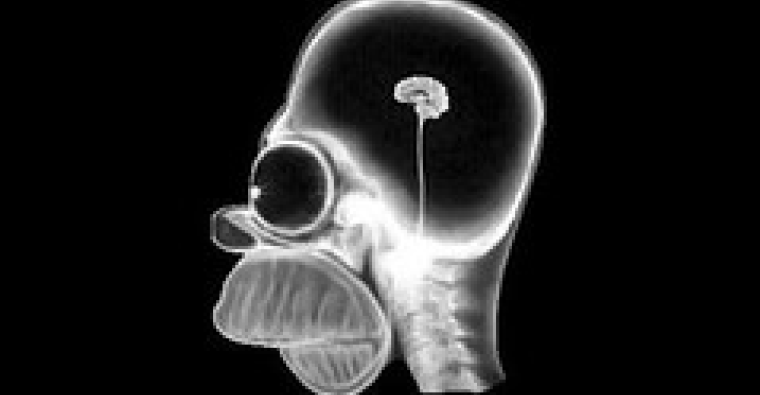Radiaton sickness is horror in itself, cancer is the most feared – and second most common – cause of death, and as we know, ionizing radiation can induce both. But how come that we use this devastating type of radiation so successfully in medical imaging and even as a cancer therapy? Well, the devil – or in this case, the angel – lies in the details. Get a clear picture of the safe doses and calculate your own risk.
First, we should know that we all permanently get ionizing radiation from space. Our ozone layer and the atmosphere are saving us for the most part (another good reason to stop global warming), but we still receive a certain dose whether we want it or not. The strength of this so-called background radiation is 3 mSv (milliSievert) yearly on average and can a little bit depend on where are we exactly on the globe, and how much we stay indoors.
But how does ionizing radiation harm us? Basically, it is interacting with all of our chemical compounds in our body, but the way it can cause the most harm is the DNA mutating ability. X-rays can directly affect a DNA molecule by changing the structure of the bases, breaking the sugar-phosphate backbone of the DNA, or disturbing the hydrogen bonds connecting the base pairs and thus causing instability. In most cases, our body can repair these damages or kill the cell with the bad DNA, but with every damage, there is a tiny possibility that the Quality Control Department of our body won’t work, which lets the cells with the mutated DNA to multiply and which eventually may lead to cancer. More work – more opportunity to fail, that much we all know about work. OK, so less X-ray, less chance to get DNA mutations (1)
In medical imaging, the ionizing X-rays are going through our body and since our different types of tissues has a different permeability to these rays, medical staff and scientists can have a nice and clear picture of what’s going on inside our body without touching or opening it. These mostly non-invasive methods are so powerful and produce so much benefit to the Patients’ health, that we tend to forget, that the tamed X-rays still does have destructive potential. But how big is the threat? To be able to measure our risks, we should know the following, very important numbers (2):
- The deadly dose of ionizating radiation is 10 000 mSv
- The typical dosage recorded in those Chernobyl workers who died within a month was 6000 mSv
- The lowest annual dose at which any increase in cancer is clearly evident is 100 mSv
- The background radiation for which our body is naturally adopted is 3 mSv yearly
Now we are ready to review and interpret the doses for each medical examination type correctly (3):
- Extremity (hand, foot, etc.) X-ray – 0.001 mSv
- Bone Densitometry (DEXA) – 0.001 mSv
- Dental X-ray – 0.005 mSv
- Chest X-ray – 0.1 mSv
- Mammography – 0.4 mSv
- Spine X-ray – 1.5 mSv
- Computed Tomography (CT) – Lung Cancer Screening – 1.5 mSv
- Computed Tomography (CT) – Head – 2 mSv
- Intravenous Pyelogram (IVP) – 3 mSv
- Cardiac CT for Calcium Scoring – 3 mSv
- Computed Tomography (CT) – Head, repeated with and without contrast material – 4 mSv
- Computed Tomography (CT) – Colonography – 6 mSv
- Upper GI Study with Barium – 6 mSv
- Computed Tomography (CT) – Spine – 6 mSv
- Computed Tomography (CT) – Chest – 7 mSv
- Barium Enema (Lower GI X-ray) – 8 mSv
- Computed Tomography (CT) – Abdomen and Pelvis – 10 mSv
- Coronary Computed Tomography Angiography (CTA) – 12 mSv
- Computed Tomography (CT) – Abdomen and Pelvis, repeated with and without contrast material – 20 mSv
- Positron Emission Tomography – Computed Tomography (PET/CT) – 25 mSv
That means that 100,000 limb x-rays, 250 mammographs, 5-50 CTs and 4 PET CTs a year can easily and safely fit into our healthcare schedule. Quantities above this may only be required very rarely, mostly due to life-threatening conditions, in which case the potentially very low carcinogenic effect of more than 100 mSv is many orders of magnitude less risk than the cancellation of the procedure for possible radiation protection reasons. In any case, when visiting a doctor, it is worth adding up the dose you have already received in the given year and drawing your doctor’s attention so that he or she can take the value into account when choosing the type of test to be used and the effective dose to use.
Fun fact: we also successfully use ionizing radiation as cancer therapy. The doses in these cases could go 40 up to 75 mSv. If you’ve been reading carefully, this is dangerously high! Yes, it is, but only for the cancer cells, as their DNA repair mechanisms are defective (perhaps this is why they became cancerous in the first place). This method uses very highly concentrated rays and during the process, the rays are targeting only the tumor tissue.
References:

Lilian Zsakai, MSc
Molecular Biologist graduated at Eötvös Loránd University, Faculty of Science PhD studies specializing in molecular diagnostics at Semmelweis University Business studies at Semmelweis Innovations & InCorpora

